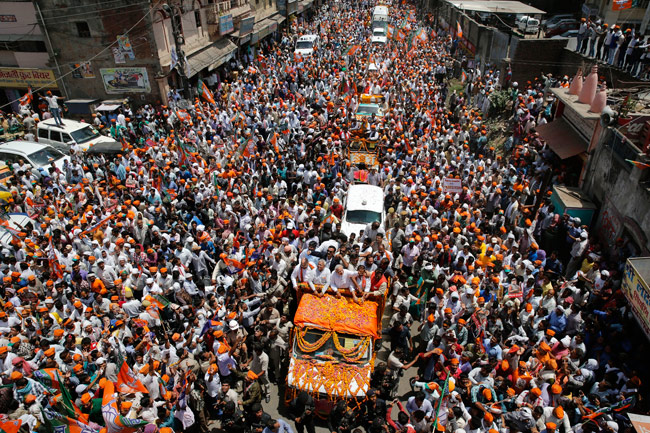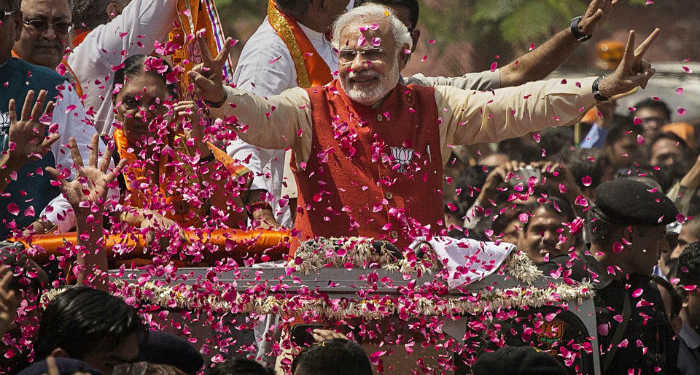Just yesterday, the internet was all gaga about the Modi government in India scoring a 73% trust rating according to an OECD survey. This indeed is a matter of pride for the nation and here we attempt to elaborate on those findings.
WHAT IS OECD?
OECD stands for ‘Organisation for Economic Co-Operation and Development’. It was founded in 1948 as an all European organisation to ensure that the mistakes committed post World War I were not repeated after the Second World War and co-operation and interdependence was the way forward for the continent rather than punishment and annihilation of the defeated nations. Seeing its success, it was subsequently joined by the US, Canada and Japan and today stands as a 39 member strong organisation. Let us clarify at the outset that India is NOT AN OECD MEMBER NATION. But the OECD recognises India, China and Brazil as rising economic giants and key partners of the OECD. (Source: http://www.oecd.org/about/history/)
WHAT IS THE OECD GOVERNMENTS AT A GLANCE SURVEY?
The findings which have captured the imaginations of one and all on the internet is the ‘OECD: Governments at a Glance Survey 2017’. The opening pages of the survey (can be accessed and downloaded for free from: http://www.oecd.org/gov/government-at-a-glance-22214399.htm) state that the survey is a GPS (as in Government Positioning System) of sorts which helps governments across the world to reliably compare their performance across a variety of indicators and decide on the best way forward. [Pg. 11 of the report]
WHAT IS THERE FOR INDIA TO CHEER ABOUT?
One of the many findings of the survey relate to the amount of trust the people repose in their central governments [Pg. 214-215 of the report]. The report defines trust as positive perception about the actions of an individual or an organisation and states that higher levels of trust usually indicate the citizens’ faith that their government is fair, reliable, responsive and capable of delivering public services and protecting the well being of the nation and its citizens. The data for this indicator is collected from the Gallup World Poll which uses a sample of around 1000 citizens per country.
So the findings reveal that 73% of Indian citizens repose faith in their Modi government which is third highest in the world, with only Switzerland and Indonesia having higher ratings. This indeed is something to cheer about. Moreover, some people have been pointing out that trust in the Indian government has decreased from about 82% in 2007 to 73% today. But such claimants very conveniently forget the findings of a similar 2012 survey (http://www.pewresearch.org/fact-tank/2013/11/21/confidence-in-government-falls-in-much-of-the-developed-world/) which showed that the confidence in the government had tanked to 55% (a sharp decrease of 27%, the second highest decrease in the world from 2007 to 2012).
So if anything, trust in the central government has only increased by leaps and bounds over the last 3 years of the Modi government.

WHAT COULD BE THE REASONS FOR THE DRAMATIC TURNAROUND?
The OECD report categorically stays away from identifying any causes for the level of trust people have placed in the Modi government. So what we can do is some intelligent extrapolation in a chronological order.
- In 2007 the UPA was just midway into its first term. The national mood was perhaps upbeat because of measures like NREGA and RTI, both introduced in 2005. The PM largely enjoyed the confidence of the urban Indians as he was thought to be a non-corrupt, reformist PM. This reflected in the 2009 mandate in which UPA bettered its tally.
- But that indeed was a case of silence before the storm. When the Indian public was buying into Manmohan Singh’s clean image, what was happening behind the scenes was something way murkier. The foundation of the scams worth crores which came to light because of the diligence of the CAG in UPA II were indeed laid in the UPA I years.
- Then stormed in Anna Hazare and team and the shocking Nirbhaya incident. Protests against corruption and sexual harrassment gripped the nation. There was a total policy paralysis and it appeared as if there was no government at all- only a motley group of corrupt, nepotistic dynasts who did everything but govern. No wonder the nation’s faith in the government eroded significantly.
- Come 2013-14, Modi entered the national stage and started giving hopes to a nation in the doldrums that with him at the helm, things would indeed turnaround and ‘Ache Din’ would come. The nation placed its faith in the man who said ‘Na khaoonga, na khaane doonga’ and appointed him as their ‘Pradhan Sevak’ with a mandate not seen in the past 30 years.
- As much as the mainstream media, opposition and some vested interests may have us believe otherwise, Modi managed to keep the faith in him and his government intact. Most significantly the nation believed and continues to believe that here is a man who is giving more than his 100% to ensure a better future for them. Schemes like Jan Dhan Yojana, Swach Bharat, Pahal, Ujwala, demonetisation (I dare say) and GST (further data can be accessed from: https://twitter.com/5forty3?lang=en) are changing India, one life at a time. And if this survey is not proof enough, results of elections right from 2014 surely are.
- India as a nation remains optimistic. What else explains ratings ridiculously high as 55% in 2012 for a government which was a failure on every front? What we now have is a dynamic and diligent leader with a vision to tap into this sense of optimism and the immense demographic dividend which India has to turn India into a Ram-Rajya and Vishwa Guru.
Bharat Mata ki Jai!!


































